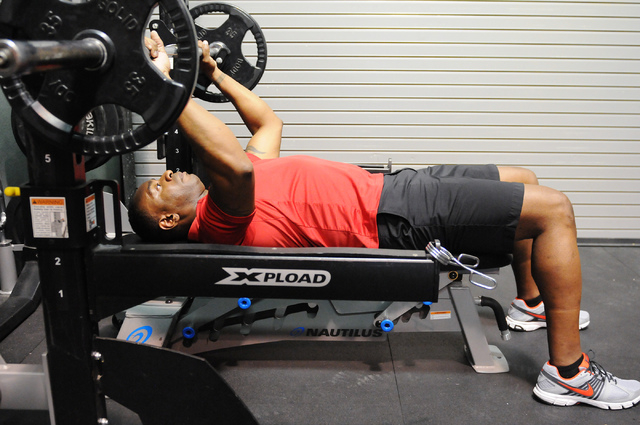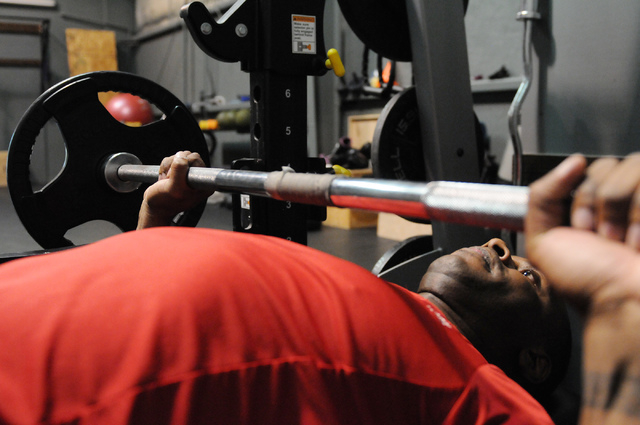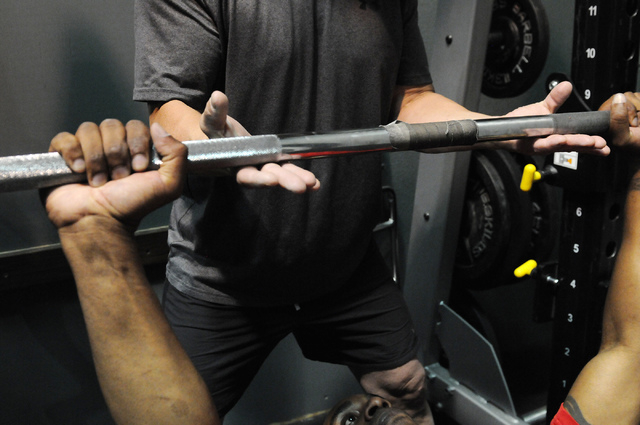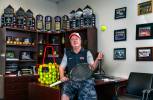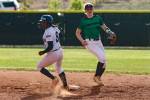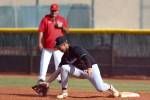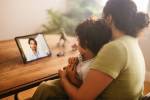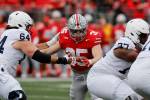Bad luck, bad decisions spur unexpected, and strange, injuries
Michael Mack, owner of Las Vegas’ Max Pawn, grew up in California and loved the ocean and boogie boarding. Usually, it was good, clean fun. But 11 years ago Mack made an uncharacteristic decision that caused him some serious pain.
Once while heading into the ocean on his boogie board, Mack chose to go over a wave instead of diving under it. Bad idea.
The boogie board snapped back so hard it broke Mack’s wrist. A greater surprise came about a year-and-a-half later when he was diagnosed with a neck fracture. A bone spur that developed after the accident was putting pressure on his spinal cord, creating neck and back pain.
“It didn’t seem that drastic. My neck kind of whipped back and I heard a crack when it happened,” Mack said. “I went to chiropractors, physical therapists. Finally, someone referred me to a neurosurgeon who found it.”
Odd, unexpected injuries happen every day, as the National Safety Council’s annual Injury Facts publication attests. Although prescription drug overdoses and cellphone-related accidents may get more press, more than $790 billion in annual medical care can be attributed to unintended injuries such as Mack’s.
Some local medical professionals, sports trainers and fitness enthusiasts say many strange injuries occur simply from bad luck, while many others result from bad decisions, ego and neglect. Here are a few strange ones to remember.
A SCARY SNEEZE
Dr. Andrew Cash, a valley spine surgeon and founder of the Desert Institute of Spine Care, or DISC, was shocked when a colleague explained how a sneeze could lead to a ruptured spinal disk. That is, until he started seeing it in his own practice.
For a disk that is already stressed or injured, a sneeze can be the final straw, Cash said. The body instinctively propels forward when sneezing, and depending on how the body is positioned before the sneeze, a disk could be vulnerable to fracture or displacement.
“It all depends on the vulnerability of their disk and what they’re doing,” Cash said.
Tedd Girouard, program director for the University of Nevada, Las Vegas’ athletic training program, has also seen athletes rupture spleens by sneezing, particularly if those athletes have had mononucleosis, or “mono.” With mono, the spleen enlarges, and it takes time for the swelling to subside, leaving it vulnerable to injury.
“That’s why if an athlete has mono, you don’t allow them to play for at least four weeks,” Girouard said.
KICKS AND HIPS AND SHOULDERS
Girouard has extensive experience as an athletic trainer with competitive youth club teams. Once, he saw a girls soccer player develop a major hip injury by missing a ball she meant to kick.
The player ended up rupturing her sartorius muscle, which runs the length of the thigh, roughly from the knee to the pelvis.
“Basically, the muscle was expecting her to hit the ball and wasn’t prepared for her not to,” he said. “The player had to be in a wheelchair for three weeks.”
Girouard has also seen a soccer player dislocate a shoulder while kicking a ball. In that case, however, the player had dislocated the shoulder several times before.
“At that point the shoulder was so loose, with the rotational force of striking the soccer ball and counterforce of balancing yourself, that’s all it took,” he said.
BICEPS BLUES
Luke Hoffman isn’t a trainer or medical expert. But he is a fitness enthusiast who invests in exercise-related businesses as owner of Majestic Properties.
Hoffman recalls an odd injury he sustained a few years ago while “bouldering,” similar to rock climbing, in the First Creek area near Red Rock Canyon National Conservation Area. His hiking companion started to fall, so Hoffman reached out to catch her.
He heard several “pops” in his arm. His arm began to swell and became numb. The diagnosis: a detached biceps that separated from the bone at the elbow on up to the shoulder.
“I had to hike all the way back to the car (about three miles). … I was told that once you hit (age) 40 that connective tissue starts to weaken,” Hoffman said. “You say ‘detached biceps’ and you think that’s something that only happens to a champion weightlifter.”
Perhaps even worse for Hoffman was that he was sidelined from using the arm for about a year. For 90 days it needed to be strapped in one position to let the muscle reattach to the bone.
“I lost complete control of my dominant arm,” he recalled. “It took a huge emotional and psychological toll.”
THE EGO PRESS
Charles Ware, who owns local nutrition, diet and physical education consulting company Innovative Health Education Solutions and has been a personal trainer for more than 20 years, has seen plenty of breaks, sprains and bonehead moves in the gym.
Ware said bench press accidents happen more often than you’d think. Not asking for a spotter on a maximum bench press lift is extremely dangerous, Ware said. But, too often, people, men especially, don’t ask for help until it’s too late.
“I have seen a guy crush his esophagus doing that,” he said. “What happens is the bar lands on the chest and you kind of freak out. … As a guy, I know ego can get the best of me, too.”
Ware, who has been caught without a spotter himself, recommends not putting collars on the ends of the bar. That way, the weight can be tilted to slide off one side then the next.
“It’s really loud,” he said. “But it’s a way to get out of the situation.”
ALL IN THE MIND
Before moving to Nevada to open Turntable Health in downtown Las Vegas, Dr. Zubin Damania was a hospitalist at Stanford Medical Center. He has seen many psychiatry-related injuries in hospital settings.
Of note are Morgellons patients who are convinced they have a parasite in their body. These patients would often come to the hospital with huge self-inflicted wounds from picking their skin. Even after testing showed no parasites, the patients remained unconvinced. In many cases, Damania said, there were also ties to bipolar disorder or methamphetamine use.
“A lot of times what will also happen is that a loved one or family member will be on board with the patient, too,” Damania said. “It can be a whole group of people that share the delusion.”
Munchausen syndrome is another disorder Damania came across. With Munchausen, patients will harm themselves to get medical attention. They will eat things they shouldn’t or physically hurt themselves. One patient swallowed shards of a broken mirror, Damania recalled. Oddly, with Munchausen, patients have no recollection of ever harming themselves.
“They don’t even know they’re doing it,” Damania said. “You confront them and it’s just flat denial.”
EYE MISHAPS
When a patient came into optometrist Adam Schwartz’s office with a badly damaged cornea, even the start of the story had the eye-care pro feeling uneasy. The patient had been cleaning out a boat’s fuel line with a coat hanger. The hanger got stuck, and the patient tugged on it too hard.
“I’m listening to this story and I already know what’s going to happen,” Schwartz said. “I’m just thinking, ‘Don’t do it.’ ”
The founder of Schwartz Eye Care has heard just about every eye injury story out there. The saddest ones, he said, occur when people are simply in the wrong place at the wrong time. One patient lost his eye when a soda bottle, stored in a hot shed on a summer day, exploded.
Schwartz also sees many women scratching the cornea with mascara brushes or burning it with curling irons. Luckily, the cornea heals itself by simply growing back its damaged skinlike layers. Often, treating this is as easy as putting a contact lens on the eye to protect it and allow the cornea to repair itself.
CONCUSSION ODDITIES
Sometimes the athletes aren’t the ones getting hurt. Girouard has also tended to several concussions for spectators at soccer matches. A lack of attentiveness is all it takes. A person struck by a ball in the head who does not have the time to prepare by bracing his or her neck before impact, can get a concussion.
“That’s always odd for me,” Girouard said. “I’m always concerned with the athletes on the field, but lo and behold a parent of one of the children is who I end up taking care of.”





